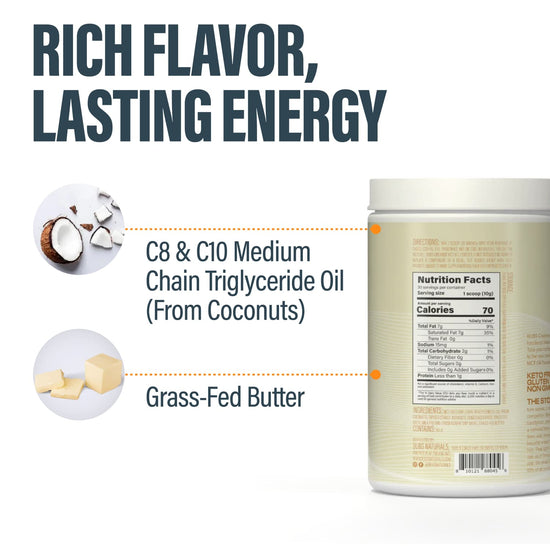Table of Contents
- Introduction
- Understanding Coffee Creamer
- Can You Freeze Coffee Creamer?
- How to Freeze Coffee Creamer
- Thawing Coffee Creamer
- Alternative Uses for Frozen Coffee Creamer
- Conclusion
- FAQ
Introduction
Have you ever found yourself in a coffee creamer conundrum, staring at an open bottle with an imminent expiration date and wondering if there's a way to save your favorite flavor? You're not alone. Many of us adore the rich, creamy additions that coffee creamers bring to our daily brews, whether it’s a luscious pumpkin spice in the fall or a refreshing vanilla in the summer. In fact, studies show that over 60% of coffee drinkers use creamers to enhance their morning routine. However, the average shelf life of a liquid coffee creamer is often a mere one to two weeks once opened, which raises the question: can you freeze coffee creamer?
In this blog post, we’ll explore the ins and outs of freezing coffee creamer, including the best methods, potential changes in texture and flavor, and tips for maximizing your creamer’s longevity. We’ll also provide insights into the different types of creamers available, ensuring you make informed choices that align with your lifestyle. As we delve into this topic, we'll uncover practical tips and tricks that not only save you money but also help you savor your favorite flavors long after the holiday season has passed.
By the end of this post, you'll have a comprehensive understanding of how to freeze coffee creamer effectively and safely, along with the knowledge necessary to maintain its quality. We want you to feel empowered to make the most of your coffee experience, so let’s brew up some knowledge!
Understanding Coffee Creamer
Before we dive into the freezing process, let’s clarify what coffee creamer actually is. Coffee creamer can be found in two primary forms: liquid and powdered. Liquid creamers are typically made from dairy or non-dairy ingredients, while powdered creamers are often made from dehydrated milk or vegetable fats.
Types of Coffee Creamers
- Dairy-Based Creamers: These are made from milk or cream and provide a rich, smooth flavor. Popular brands include half-and-half and heavy cream.
- Non-Dairy Creamers: Usually made from plant-based sources, these creamers often contain ingredients like corn syrup, vegetable oils, and various stabilizers. They cater to lactose-intolerant individuals or those seeking a vegan option.
- Flavored Creamers: These creamers come in a variety of flavors, from classic vanilla to seasonal specialties like peppermint mocha or eggnog.
Understanding the type of coffee creamer you have is crucial, as it can impact how well it freezes and the quality after thawing. Generally, non-dairy creamers tend to freeze better than dairy creamers due to their composition.
The Lifespan of Coffee Creamer
Knowing the lifespan of different creamers is essential for effective storage. Here’s a quick breakdown:
- Liquid Dairy Creamers: Last about 1-2 weeks in the refrigerator after opening.
- Liquid Non-Dairy Creamers: Can last up to a month after opening.
- Powdered Creamers: Have a shelf life of around 2 years unopened, but only 6 months once opened.
Freezing creamer can be a practical solution if you find yourself with excess, especially with seasonal flavors that you may want to enjoy later.
Can You Freeze Coffee Creamer?
The short answer is yes, you can freeze coffee creamer. However, there are some important considerations to keep in mind regarding texture, flavor, and the freezing process itself.
What Happens When You Freeze Creamer?
When you freeze coffee creamer, the liquid expands as it turns to ice. This can sometimes lead to changes in texture, with separation of ingredients occurring during the freezing and thawing process. For instance, dairy creamers may become grainy or slightly lumpy once thawed. This isn’t harmful and can often be remedied by shaking or stirring the creamer before use.
Will It Affect Flavor?
While freezing coffee creamer won’t make it unsafe to consume, it can potentially alter the flavor. Dairy creamers may lose some of their freshness, while non-dairy creamers tend to retain their taste better post-freezing. If you're using flavored creamers, be aware that the intensity of flavor may diminish slightly after freezing and thawing.
Recommendations from Brands
Many brands, including those that specialize in creamers, recommend against freezing due to the potential for changes in quality. However, if you’re in a bind and need to extend the life of your creamer, freezing can be an effective method. Just remember to use airtight containers or freezer bags to minimize freezer burn.
How to Freeze Coffee Creamer
Now that we’ve established that freezing coffee creamer is possible, let’s discuss the best methods to do it effectively.
Method 1: Freezing in an Airtight Container
Step-by-Step Guide:
- Choose Your Container: Select a freezer-safe, airtight container or a sealable plastic bag. Avoid freezing in the original bottle, as liquids expand when frozen and may cause the bottle to burst.
- Portion Control: If you plan to use the creamer in smaller quantities, consider dividing it into portions. This way, you can thaw only what you need.
- Labeling: Don’t forget to label your container with the date and contents. This will help you track how long it has been in the freezer.
- Freeze: Place the container in the freezer. Creamers can generally be stored for about 4 to 6 months, but for dairy-based creamers, it’s best to use them within 3 months.
Method 2: Freezing in Ice Cube Trays
If you'd like to freeze your coffee creamer in single servings, ice cube trays are a fantastic option.
Step-by-Step Guide:
- Pour into Ice Cube Trays: Fill the compartments of the ice cube tray with coffee creamer, leaving a little room at the top for expansion.
- Freeze Until Solid: Allow the creamer to freeze completely, which may take several hours.
- Transfer to a Bag: Once frozen, pop the creamer cubes out of the tray and transfer them to a freezer-safe bag or container, labeling it with the date.
- Usage: You can use these cubes directly in your coffee, where they will melt quickly.
Thawing Coffee Creamer
Thawing your frozen coffee creamer properly is just as important as the freezing process. Here are some methods to ensure optimal results.
Safe Thawing Methods
- Refrigerator Thawing: The safest method is to transfer the container or bag of frozen creamer to the refrigerator. Allow it to thaw overnight.
- Counter Thawing: If you need it more quickly, you can let the creamer sit at room temperature for a short period. However, avoid leaving it out for longer than two hours to prevent bacterial growth.
- Direct Use in Coffee: If you’ve frozen creamer in ice cube trays, you can simply toss a cube into your coffee. The heat from the coffee will melt the cube almost instantly.
What to Expect After Thawing
When you take your cream out of the freezer, you might notice some separation. This is normal! Just give it a good shake or stir to recombine the ingredients before adding it to your coffee.
Alternative Uses for Frozen Coffee Creamer
If you find yourself with leftover frozen coffee creamer or want to get creative, there are plenty of ways to incorporate it into other recipes. Here are a few ideas:
- Coffee Shakes: Blend frozen creamer cubes into smoothies or milkshakes for added creaminess.
- Baking: Use thawed creamer in pancake or waffle batter to give your breakfast a rich flavor.
- Coffee Desserts: Incorporate thawed creamer into desserts like ice cream or coffee-flavored cakes.
Conclusion
Freezing coffee creamer is a practical solution for coffee lovers who want to extend the life of their favorite flavors. Whether you choose to freeze it in bulk or as convenient individual servings, knowing how to do it correctly can save you money and reduce waste. Remember to consider the type of creamer you have, as dairy-based and non-dairy options can behave differently when frozen.
Now that you’re equipped with the knowledge of how to freeze coffee creamer, you can enjoy your favorite flavors year-round. As we continue to embrace convenience in our busy lives, let’s make the most out of our ingredients and savor every cup of coffee.
FAQ
1. Can I freeze homemade coffee creamer? Yes, you can freeze homemade coffee creamer. Just be sure to store it in an airtight container and consume it within a few months for the best quality.
2. How long can I keep frozen coffee creamer? Frozen coffee creamer can be stored for about 4 to 6 months. Dairy-based creamers should ideally be used within 3 months for optimal taste and texture.
3. Can I use frozen coffee creamer in hot coffee? Absolutely! You can add frozen creamer cubes directly to hot coffee, where they will melt quickly, adding creaminess to your drink.
4. What should I do if my thawed creamer looks grainy? This is normal after freezing. Simply give it a good shake or stir to recombine the ingredients before using it.
5. Is it safe to freeze coffee creamer that is near its expiration date? While it’s generally safe to freeze coffee creamer near its expiration date, the flavor and quality may not be as good after thawing. It’s best to freeze it while it’s still fresh.
By implementing these strategies, you can enjoy your coffee creamer longer and reduce waste, aligning with a sustainable lifestyle. Cheers to many delicious cups of coffee ahead!
Written by:

Butter MCT Oil Creamer
BUBS Butter MCT Oil Creamer (formerly Halo Creamer): Scientifically-Backed Brain and Body Fuel
BUBS Butter MCT Oil Creamer is your go-to for clean, fast-acting energy and focus, no crash included. It blends creamy grass-fed butter with fast-acting MCT oil powder (C8 and C10) to kickstart your day and keep you sharp. The MCTs go straight to work, giving your brain a quick boost while the grass-fed butter supports digestion and gut health.
Together, they help curb cravings, keep you feeling full longer, and support steady energy throughout the day—perfect for fueling your mornings or powering through the afternoon slump.
Starts at $37.00
Shop

